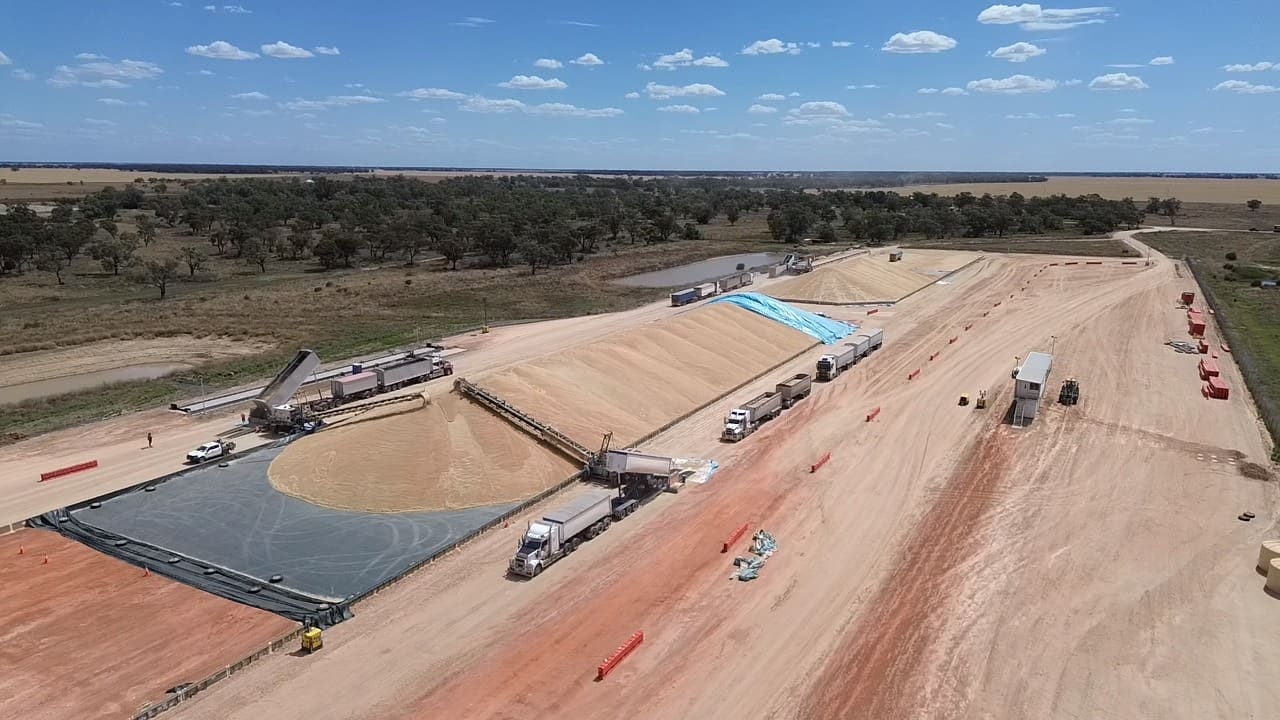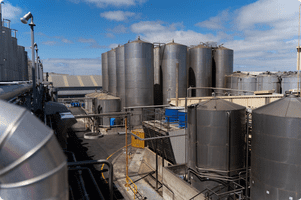
GrainCorp’s Burren Junction site is taking in large amounts of grain from the current harvest. Photo: GrainCorp
GRAINCORP has reported a record oilseed crush volume for the year ending September 30, which saw a 53-percent drop in total earnings due to lower grain volumes.
The ASX-listed agribusiness crushed 540,000 tonnes of canola seed in FY24, up from the FY23 total of 496,000t.
The crush figure was a bright spot amid overall lower financials, with underlying earnings before interest, taxes, depreciation and amortisation of $268 million for FY24, compared with $565M in the previous year.
The underlying net profit after tax of $77M was almost 70pc lower than the FY23 result of $250M.
GrainCorp’s managing director and chief executive officer Robert Spurway said the company showed “discipline in operational performance and effective cost management” during the year to combat the “challenging global market conditions and variable crop production”.
Grain volumes handled across eastern states and Western Australia also fell in FY24, with 28 million tonnes (Mt) of total grain handled, down from 37.4Mt in FY23.
Also reduced were domestic outloads totalling 5.9Mt, compared to 6.4Mt for FY23, and exports of 5.6Mt, down from FY23’s result of 8.3Mt.
Agri-energy volumes grew during the financial year by 28,000t to 379,000t, driven by strong tallow and used cooking oil numbers.
GrainCorp chief financial officer Ian Morrison said the FY24 crop year saw drier conditions across Queensland and northern New South Wales offset by above-average conditions in southern NSW and Victoria.
“Overall, we saw lower production and grain handle volumes relative to recent record crops across the east coast,” Mr Morrison said.
“The lower production volumes across the east coast, as well as global factors, contributed to a softening of margins from recent years.

GrainCorp’s East Tamaki facility in Auckland.
“On the grower side, selling pace was slower this year and then on the demand side, we have seen customers less concerned about supply and disruptions in supply chains, and that’s partly off the back of improved global production conditions.”
Mr Morrison said as part of the international business segment, GrainCorp has opted to cease manufacturing at its New Zealand East Tamaki food processing plant.
He said this decision came after a strategic review of the facility.
Crush expansion progressing
GrainCorp has previously announced plans to expand its crush capacity with the construction of a new facility.
Mr Spurway said GrainCorp was still assessing locations on the west and east coasts.
“We would expect to target a [front-end engineering design] phase in 2026,” Mr Spurway said.
“We are moving as fast as industry will allow.
“It is important to develop a demand signal across the sector, so that we are building a business case and ultimately investing at the same time that demand from refiners and fuel processors is coming on-line in Australia.
“Supporting government policy to develop opportunities for mandates and an appropriate environment will certainly help accelerate those timelines and provide certainty for investment into the future.”
2024-25 crop outlook
Mr Spurway said “strong volumes” were expected from the winter crop now being harvested in northern growing regions, while southern crops were impacted by drier and more variable weather conditions.
“Harvest is well under way and in fact it’s coming much earlier and stronger than we’ve seen in previous years (and) receivables year to date are 5.8Mt, which is a very strong figure.
“I was out and about in NSW over the weekend, and you can certainly see the strength of the harvest not just across northern NSW but also through into central NSW.
“We expect good receivables as harvest progresses through southern NSW and into Victoria in the coming weeks.
“Global crop production is relatively strong and that means that Australian grain is competing around the world, but pleasingly, there remains strong demand for grain generally.”
Alongside receivals, GrainCorp also reported strong early year-to-date export volumes of 400,000t.
Mr Spurway said grain and crush margins were expected to continue to be softer throughout the 2025 financial year due to market conditions and small volumes.
“The year-on-year increase in volume of grain produced on the (east coast of Australia) provides the opportunity for improved export volumes in 2025.
“However, market dynamics are expected to impact margins, with Australian grain exports competing against a relatively strong supply of grains and oilseeds globally.
“Our Nutrition and Energy businesses are performing well, with strong crush volumes achieved, although crush margins are forecast to remain under some pressure due to global market conditions and a smaller crop expected in Victoria.”
He said GrainCorp was anticipating that margins may improve as harvest continues and demand increases.
“We’ve seen a moderation and arguably a slight overcorrection of the conditions that we saw in 2022 and 2023.
“As a result, farmers are generally not racing into the market to sell, and buyers are not looking to buy ahead because there’s no major concerns around supply but as the year plays out, inevitably demand will continue to grow.
“Sales or buying opportunities for grain will continue to occur through harvest and we would expect to see margins develop.”